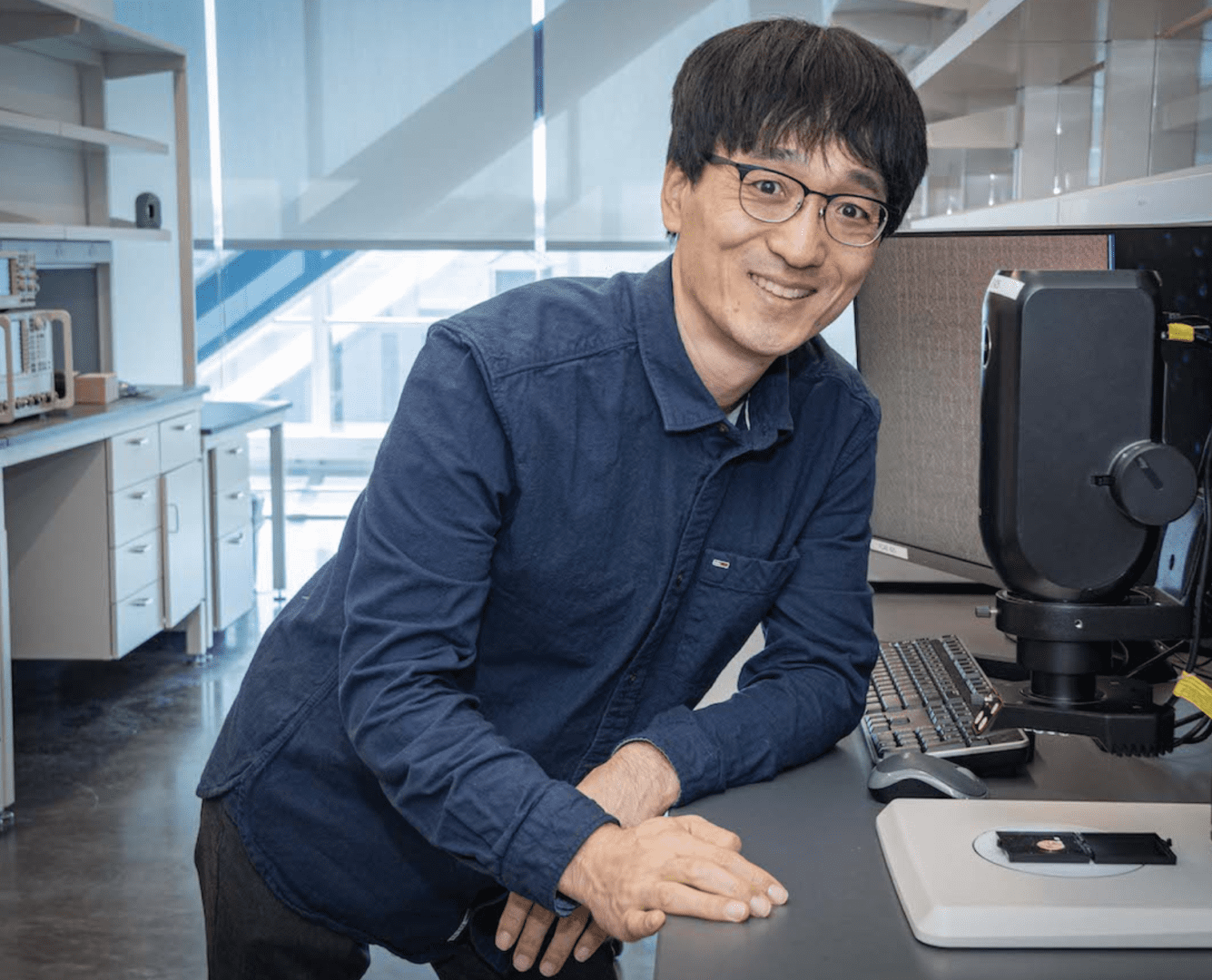Search Posts
Recent Posts
- Rhode Island Weather for June 1, 2025 – Jack Donnelly June 1, 2025
- To Do in RI: 26th Annual Rose Show of the Rhode Island Rose Society June 1, 2025
- Victory is ours: Victory gardens are blossoming again – Chuck Norris June 1, 2025
- Ask Chef Walter: The problem with “The Best” – Chef Walter Potenza June 1, 2025
- Gimme’ Shelter: Kava is waiting at the Providence Animal Control Center June 1, 2025
Categories
Subscribe!
Thanks for subscribing! Please check your email for further instructions.

NASA funding URI engineering professor to develop next-gen telescope technology
Photo: Sungho Kim, assistant professor of electrical, computer and biomedical engineering, in his lab at the Fascitelli Center for Advanced Engineering. Photos: Nora Lewis
$1.2 million NASA grant supporting development of miniature semiconductors at URI
University of Rhode Island Professor Sungho Kim is developing technology that could be part of NASA’s next-generation telescope that will allow the space agency to observe and study phenomena that occurred 13.7 billion years ago. Kim is working on the first prototype of a miniaturized semiconductor for a next-generation, far-infrared unit that could help NASA study the origins of the universe.
Kim, an assistant professor of electrical, computer and biomedical engineering, and his research team are developing miniature semiconductors that are much lighter than current technology, use less energy, and are more resistant to radiation. The project is being funded by a $1.2 million, 3-year NASA grant. Tests on the chips will be run at URI.
“The problem is the space environment is not friendly to electronics,” said Kim, who formerly worked at NASA’s Jet Propulsion Laboratory at the California Institute of Technology. “On Earth, our electronics are protected from radiation by the atmosphere.”
He has assembled a team of graduate students for the project: Prinsca Kusorbor, a Ph.D. student, and Frank Danso, a master’s degree student, both from Ghana; Youn Seo, a master’s degree student from South Korea; and Joseph Daiaa, a senior electrical engineering and German student.
“We are developing a miniaturized semiconductor chip to replace a bulky, power-hungry system,” Kim said. “We will develop the miniaturized semiconductor system in the lab, and a manufacturer will fabricate my design in an advanced silicon process.”
“Our chips will be approximately 4 millimeters by 4 millimeters,” Kim said, adding that the current unit is about 1 meter by 1 meter. “In space, smaller is better and usually more durable. These require much less power, and that is important since electrical energy is limited in space. The only source is solar power. The current system consumes more than 100 watts of electricity, where ours needs only 10 watts. It’s much easier to make a single, small chip resistant to radiation.

“All the hardware in the ‘box’ can be replaced by a single chip,” he said. ”These chips will collect data from the telescope, process it for scientists on Earth.”
A semiconductor is a crystal material with the ability to conduct electricity. These chips can act as conductors and sometimes as insulators. A chip of silicon, which is less than half an inch square, may contain millions of microscopic transistors, which can serve control and memory functions when installed in a computer, automobile, and in this case, NASA’s newest telescope.
NASA launched the James Webb Telescope, which cost $10 billion to build, in December 2021. The Webb is a mid-infrared telescope, operating about 1 million miles from Earth, and the Hubble Telescope is a near-infrared telescope, which orbits the Earth.
“It took NASA 10 years to design and build the Webb Telescope, which is exploring the universe using mid-infrared and sending breathtaking images,” Kim said. “ Now, NASA has begun finding candidates for next-generation, space-borne telescopes. NASA’s astrophysics decadal survey nominated a far-infrared telescope as a candidate for the next-generation space telescope, which will see farther and capture an older universe than the Webb Telescope.
“Many people thought the Webb Telescope was too expensive, but that all changed when it started sending back breathtaking images,” Kim said.
___
